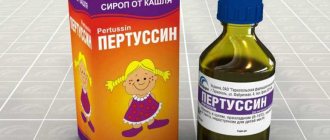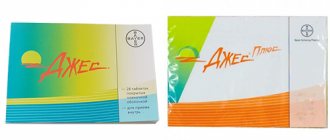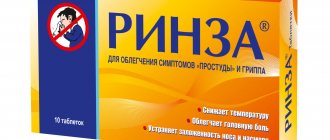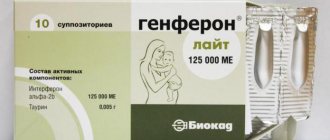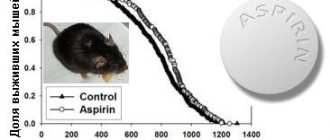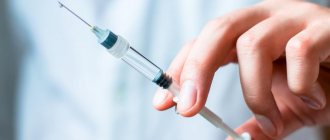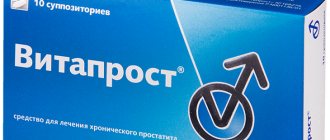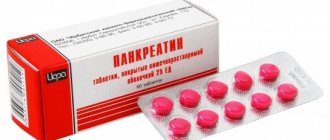Probably many people have come across the drug Prednisolone. After all, this medication is used for various pathologies. People suffering from chronic allergic diseases and systemic pathologies are especially well aware of it. This drug is also used in veterinary medicine. At the moment, the drug is not available everywhere. Therefore, many people ask the question: why is there no prednisolone in pharmacies and where can you buy it? Despite the shortage of this medication, there are many analogues of the drug. Therefore, you should not panic and start self-medication. To find a suitable replacement medication, you should consult a doctor.
pharmachologic effect
According to reviews, Prednisolone has anti-inflammatory, immunosuppressive, antiallergic, glucocortioid and anti-shock effects.
The substance interacts with special receptors in the cytoplasm of the cell and forms a specific complex that penetrates into the nucleus, binding to DNA and causing the expression of mRNA. Changes the formation of proteins on ribosomes that express the effects of cells. Accelerates the synthesis of lipocortin, which inhibits phospholipase A2, inhibits the biosynthesis of endoperoxide and the liberation of archidonic acid, essential for the body, as well as prostaglandins, leukotreins (promote the progression of inflammation, allergies and other processes of a pathological nature).
Stabilizes the membrane membrane of lysosomes, inhibits the synthesis of hyaluronidase (an enzyme that breaks down hyaluronic acid in a special way), reduces the production of lymphokines produced by lymphocytes. Affects the processes of alteration and exudation during inflammation, delays the spread of the inflammatory process.
Inhibits the migration of monocytes in areas of inflammation and limits the proliferation of connective tissue cells, which has an antiproliferative effect. Inhibits the process of formation of mucopolysaccharides, thereby preventing water from combining with plasma proteins in the rheumatic focus of inflammation.
Inhibits the intensity of destruction of peptide bonds, preventing the destruction of tissue and cartilage in rheumatoid arthritis.
In what cases is Prednisolone prescribed to children? Reviews confirm that the antiallergic effect of the drug is due to a decrease in the number of basophils, a decrease in the synthesis and secretion of mediators of an immediate allergic reaction. Promotes the development of lymphopenia and involution of lymphoid tissue, thereby causing immunosuppression.
Reduces the concentration of T-lymphocytes in the blood plasma and the production of immunoglobulins. Increases the breakdown and reduces the production of components of a complex of complex proteins, inhibits Fc receptors of immunoglobulins, inhibits the functions of macrophages and leukocytes. Increases the number of receptors and normalizes their sensitivity to a variety of physiologically active substances in the body. This is confirmed by the instructions for use and reviews for Prednisolone ointment.
Reduces protein synthesis and its amount in the blood plasma, but at the same time accelerates its energy metabolism in muscle tissue. Promotes the production of fibrinogen, surfactant, erythropoietin, lipomodulin and enzyme proteins in the liver. It also promotes the redistribution of fat, the production of triglycerides and IVH. Increases the absorption of carbohydrates from the gastrointestinal tract, the activity of phosphoenolpyruvate kinase and glucose-6-phosphatase, which enhances gluconeogenesis and mobilizes glucose in the bloodstream.
Retains water and sodium, and also accelerates the excretion of potassium. Reduces the absorption of calcium in the intestines, while increasing excretion by the kidneys and leaching it from the bones.
Pharmacological properties
The drug belongs to hormonal drugs (weakly active glucocorticosteroids of the 1st group). Prednisolone, being a more active dehydrogenated analogue of hydrocortisone or cortisol, inhibits the enzyme phospholipase A2, which accelerates the synthesis of prostaglandins e1 and e2.
The result of this is a significant decrease in the concentration of the main inflammatory mediators (PGs e1 and e2), which leads to a decrease in pain and the severity of inflammatory reactions.
In this case, prednisolone interacts with the cytoplasmic receptors of the body, which leads to the formation of inducing synthesis of vital proteins and enzymes. The anti-inflammatory effect is also achieved by inhibiting the functions of neopterin, inflammatory cytokines (including interferon-beta, interferon-gamma, interleukin-1) and strengthening the molecular structure of proteins and lipids.
The extensive biochemical effect of the drug is also aimed at suppressing the immune system, which leads to a decrease in the number of cells responsible for the inflammatory process (tissue macrophages, lymphocytes, leukocytes).
This immunosuppressive effect occurs due to the specific effect of prednisolone on cellular and other structures, in particular, the occurrence of involution of lymphoreticular tissue, inhibition of the proliferation of beta and T lymphocytes, as well as a decrease in the formation of antibodies.
The effects include the following:
- Increased reabsorption of sodium and water ions in the distal convoluted tubules of the kidneys, which often leads to swelling.
- Increased protein catabolism in the body (decomposition).
- Inducing protein production in the liver.
- Inhibition of bone tissue synthesis, as well as suppression of the production of follicle-stimulating and thyroid-stimulating hormone.
- Increased serum glucose concentration.
- Reduced production of adrenocorticotropic hormone during long-term drug therapy with Prednisolone.
- Reduced absorption of potassium in the intestines, as well as its accelerated removal from the body.
- Redistribution of adipose tissue and fiber, which can contribute to its deposition in the upper body and facial area.
- Increased excitability of the brain.
- Reducing the threshold for convulsive readiness, as well as the risk of convulsive reactions with relatively weak stimuli.
Many of these effects are the basis for the occurrence of negative reactions. If you properly follow the instructions for use of the medicine, as well as if you follow medical recommendations, possible harm from using the drug will be minimized.
One of the advantages of Prednisolone is the speed of its action: the use of the drug is important both in complex therapy and in case of critical situations (to prevent the development of massive edema, relieve spasms of the respiratory tract, etc.).
In addition to relieving inflammatory symptoms and reducing swelling, the drug may have some other effects. These include:
- Relief of shock. Prednisolone restores the sensitivity of adrenergic receptors to vasoconstriction (narrowing of the lumen of blood vessels), to basic catecholamines and an increase in their concentration. In total, this leads to an increase in blood pressure and activation of liver enzymes involved in the metabolism of endobiotics.
- Suppression of tissue proliferation and cell reproduction to prevent the formation of scar thickenings and the appearance of tumors.
- Disappearance or reduction of itching, especially in allergic or inflammatory processes.
- Rapid antihistamine effect, stopping the development of spasms, allergic swelling, rashes.
- Elimination of excessive vascular permeability, which has an anti-exudative effect.
Relief of the allergic reaction occurs due to the reduction of basophilic leukocytes by the active substance and suppression of the release of inflammatory mediators from circulating lgE mast cells. Excessive doses of the drug can stimulate the production of pepsin and hydrochloric acid, leading to the development of peptic ulcers.
Prednisolone has good absorption: after administration, it is almost completely absorbed from the gastrointestinal tract. The maximum concentration in plasma can be recorded in the range from 60 to 90 minutes. In some cases it could appear after 2 hours. In this case, the onset of the maximum biological effect occurs 4-8 hours after administration.
Eating food can slow down C-max by 1-2 hours, but does not have a strong effect on the therapeutic properties of the drug. The binding rates of prednisolone to transcortin (corticosteroid-binding globulin) are about 90−95%. This percentage also includes binding to plasma albumin. Only 5−10% of the substance remains biologically active.
The main metabolic processes occur in the liver with the formation of prednisone, an active metabolite. About 25% of the substance is excreted unchanged by the kidneys along with urine, 20% is eliminated during the elimination process.
The average half-life from the body is 120−240 minutes. Taking medications that induce hepatic isoenzymes reduces the elimination time. The biological half-life is approximately 18-36 hours.
Pharmacokinetics
“Prednisolone,” according to reviews, has an anti-shock effect, activates the production of certain cells in the bone marrow, increases the number of red blood cells and platelets in the blood, and also reduces the number of monocytes, lymphocytes, basophils and eosinophils.
When taken orally, the medicine is well and quickly absorbed from the gastrointestinal tract. 70-90% of the substance is found in plasma in bound form: with albumin and transcortin. After oral administration, the maximum concentration of the substance in the blood plasma is observed after an hour and a half.
Metabolized in the liver by oxidation. The half-life of the substance from plasma is 120-240 minutes, from tissues - in the range from 20 to 34 hours. Less than 1% of the dose of the substance passes into the milk of a nursing woman. 20% of the substance is excreted unchanged by the kidneys.
Cost and analogues
The price of Prednisolone depends both on the form of release and on the amount of the main substance. On average, the cost of the tablet form is from 50 to 120 rubles, the price for the ointment is from 13 to 20 rubles. The injection solution in ampoules costs about 45 rubles for a package with 3 ampoules and about 280 rubles for 25 pieces.
Today, there are many generics (having the same active ingredient) and full-fledged analogues of the drug. Among the generics are Prednisol, Prednisone, Metopred and Decortin . Analogues include Dexamethasone, Betamethasone, Cortef, Megadexan, Dexazon, Flosteron, Dexoftan, Ozurdex.
Indications for use
According to reviews, Prednisolone is administered by intravenous or intramuscular infusion for:
- acute allergic reaction;
- bronchial asthma and status asthmaticus;
- for the prevention and treatment of thyrotoxic reactions and thyrotoxic shock;
- myocardial infarction;
- acute adrenal insufficiency;
- liver cirrhosis;
- acute hepatitis;
- poisoning with cauterizing liquids.
Prednisolone is administered by intra-articular injection for:
- rheumatoid arthritis;
- spondyloarthritis;
- post-traumatic arthritis;
- osteoarthritis.
Indications
As a rule, Prednisolone solution is used to reduce the severity of inflammatory processes and scars in tissues after burns with chemicals.
There are also a number of other indications during which the medicine is used as an emergency aid, these include:
- Severe allergy, which is accompanied by systemic anaphylactoid symptoms, such as asthmatic syndrome, bronchial asthma, anaphylactic shock.
- Shock conditions of various etiologies, which are accompanied by a critical decrease in systemic blood pressure and multiple organ failure.
- Various pathologies of connective tissue, which are expressed by the development of autoimmune antibodies to the body’s own cells.
- Severe swelling of the head brain after injury, due to intoxication or after surgery.
- Hepatitis (an inflammatory process in the liver of various etiologies) with the death of a large number of tissues and the appearance of acute liver failure.
- Chronic adrenal insufficiency, which is accompanied by a significant decrease in hormone production.
- Thyrotoxic crisis is a condition that is expressed by a significant increase in the synthesis of thyroid hormones and their toxic effects.
Pills
In the form of Prednisolone tablets, according to reviews, it is prescribed for:
- systemic connective tissue diseases;
- chronic and acute inflammatory diseases of the joints: psoriatic and gouty arthritis, osteoarthritis, polyarthritis, juvenile arthritis, glenohumeral periarthritis, Still's syndrome in adults, synovitis and epicondylitis;
- rheumatic fever and acute rheumatic carditis;
- bronchial asthma;
- acute and chronic allergies;
- allergic reactions to food and drugs, angioedema, serum sickness, urticaria, allergic rhinitis, drug exanthema, hay fever;
- skin diseases;
- pemphigus, psoriasis, eczema, atopic dermatitis, diffuse neurodermatitis, contact dermatitis, toxicerma, seborrheic dermatitis, exfoliative dermatitis, malignant exudative erythema (Stevens-Johnson syndrome), cerebral edema after preliminary use in the form of intravenous or intramuscular injections;
- adrenal insufficiency;
- kidney diseases of autoimmune origin, nephrotic syndrome;
- diseases of the hematopoietic organs: agranulocytosis, panmyelopathy, autoimmune hemolytic anemia, lymphogranulomatosis, myeloma, thrombocytopenic purpura, secondary thrombocytopenia in adults, erythroblastopenia;
- lung diseases: acute alveolitis, pulmonary fibrosis, stage II-III sarcoidosis;
- pulmonary tuberculosis, tuberculous meningitis, aspiration pneumonia;
- berylliosis, Loeffler's syndrome;
- lung cancer;
- multiple sclerosis;
- diseases of the gastrointestinal tract;
- hepatitis;
- prevention of transplant rejection reactions;
- hypercalcemia due to cancer;
- nausea and vomiting during cytostatic therapy;
- allergic eye diseases;
- inflammatory eye diseases.
This is confirmed by the instructions for use and reviews for Prednisolone. The price will be presented below.
What other unwanted reactions does the drug provoke?
Prednisolone causes:
- Thinning of the skin.
- Erythema.
- Pseudotumor syndrome (clinical syndrome: increased intracranial pressure occurring in the absence of an intracranial mass lesion or hydrocephalus).
- Depression.
- Hallucinations.
- Petechiae (point rashes on the skin, no more than three millimeters, hemorrhagic in nature, shaped like a circle).
- Diplopia (ophthalmological pathology associated with double vision).
- Vertigo (a symptom known as dizziness, it is characteristic of ear pathology or, less commonly, brain damage).
- Loss of sleep.
- Headache.
- Glaucoma.
- General weakness.
- Fainting.
- Telangiectasia (chronic increase in the diameter of small capillaries on the surface of the skin, manifested in the form of spider veins or stars).
- Purples.
- Steroid acne.
- Burning sensation.
- Dryness.
- Hypertrichosis (a disease manifested in excess hair growth that is not typical for a given area of the skin and does not correspond to gender and/or age).
Ointment
Prednisolone in ointment form is used for:
- urticaria, atopic dermatitis, diffuse neurodermatitis, lichen simplex chronicus, eczema, seborrheic dermatitis, discoid lupus erythematosus, simple and allergic dermatitis, toxicerma, erythroderma, psoriasis, alopecia;
- epicondelitis, tenosynovitis, bursitis, humeroscapular periarthritis, colloid scars, sciatica.
Storage conditions and periods
To purchase Prednisolone, you must have a prescription for the drug.
Rp: Sol. Prednisoloni hydrochloride 3% – 1.0
Dtd N 3 in amp.
S. IM 0.7 ml (IM – 2 mg/kg/day; IV – 5 mg/kg/day)
The ointment retains its properties at a temperature of 5-15°C, tablets and solution for systemic use - at temperatures up to 25°C, eye drops - at a temperature of 15-25°C.
The contents of an opened bottle of drops must be used within 28 days.
For ointments, tablets and solution for systemic use - two years, for eye drops - three years.
List B.
should be stored in a cool place.
The ointment can be used for 3 years from the date of release indicated on the package.
You can buy the ointment with a doctor's prescription (prescription in Latin).
The cost is 30 rubles. in Moscow pharmacies.
Drops
"Prednisolone" in the form of eye drops is prescribed for non-infectious inflammatory diseases of the anterior segment of the eye - iritis, uveitis, episcleritis, scleritis, conjunctivitis, parenchymal and discoid keratitis without damage to the corneal epithelium, allergic conjunctivitis, blepharoconjunctivitis, blepharitis, inflammatory processes after eye injuries and surgery , sympathetic ophthalmia.
The price and reviews of Prednisolone are of interest to many. We will talk about them below.
Composition and release form
The main active ingredient of the drug is prednisolone (in Latin - Prednisolone). Also, each dosage form has its own auxiliary components.
Today there are 4 forms of release of the drug. These include:
- Tablet form. The concentration of the active substance is 1 or 5 mg, and the auxiliary components are lactose monohydrate, talc, corn and potato starch, octadecanoic acid and colloidal silicon dioxide.
- Ampoules. The injection solution contains 30 mg/ml prednisolone. The composition also includes distilled water, sodium metabisulfite, caustic soda, niacin amide and disodium ethylenediaminetetraacetic acid as additional elements.
- Eye drops. 5 or 10 mg of active ingredient.
- Ointment. In addition to 0.05 mg of the active substance, the external form of release includes glycerin, emulsifiers Cremofor A25 and A6, octadecanoic acid, as well as preservatives E216 and E218.
Tablets are sold in quantities of 20, 30, 50 and 60 pieces in cardboard packages and polymer jars, as well as 100 pieces in polypropylene bottles. Injection solutions are produced in ampoules; one cardboard package contains 3, 5 or 10 dark glass ampoules. Ointment - in aluminum tubes of 10, 15 and 20 g, and eye drops 0.5% - in bottles of 10 ml.
It is necessary to store drugs of any release form out of the reach of children, protected from direct sunlight at a temperature of 18 to 25 degrees. The shelf life of eye drops and ointments is 3 years. After opening the bottle or tube, the drug must be used within a month.
The injection solution can be stored for 2 years, and after opening at low temperature - for 24 hours. The tablets have a shelf life of 5 years from the date of manufacture.
Contraindications for use
Contraindications for systemic use are:
- infectious and parasitic diseases of fungal, viral or bacterial nature;
- amoebiasis;
- systemic mycosis;
- latent and active tuberculosis;
- immunodeficiency states;
- gastritis, peptic ulcer of the stomach and duodenum, esophagitis, ulcerative colitis;
- vascular diseases;
- endocrine diseases;
- acute psychosis;
- obesity;
- breastfeeding period;
- pregnancy.
This is confirmed by the instructions for use and reviews for Prednisolone.
Contraindications to intra-articular injections are:
- infectious and inflammatory processes in the joint;
- general infectious diseases;
- “dry” joint;
- pregnancy;
- joint instability as an outcome of arthritis.
Contraindications for use on the skin are:
- viral, bacterial and fungal skin diseases;
- skin manifestations of syphilis;
- lupus;
- skin tumors;
- acne vulgaris;
- pregnancy.
Contraindications to the use of Prednisolone, according to reviews, in the form of eye drops may be:
- fungal and viral eye diseases;
- purulent corneal ulcer;
- acute purulent conjunctivitis;
- glaucoma;
- trachoma.
Contraindications
Individual intolerance and hypersensitivity to the components of the drug is a standard condition for replacing the drug. Pregnancy, lactation and age under 18 years (due to high toxicity and risk of side effects) are also contraindications to taking Prednisolone.
This should also include the presence of the following pathologies in the patient:
- HIV infection, AIDS and other immunodeficiency conditions.
- Severe functional failure of the liver and kidneys.
- Urolithiasis disease.
- Pathologies of the endocrine system - diabetes mellitus, Itsenko-Cushing's disease, hyperthyroidism and hypothyroidism, thyrotoxicosis.
- Osteoporosis (including systemic).
- Glaucoma (open-angle and closed-angle form).
- Diseases of infectious and parasitic origin, provoked by fungi, viruses or bacteria. Herpes virus infections, latent or active tuberculosis, amoebic dysentery, mycoses, Cochin diarrhea, measles, chickenpox.
- Elevated levels of cholesterol, high and low density lipoprotein and thyroglobulin in the blood serum.
- Hypoalbuminemia.
- Neuromuscular diseases such as myasthenia gravis.
- Post-infarction condition, as well as decompensated heart failure in chronic form.
- Psychotic disorders in acute form.
- Pathologies of the gastrointestinal tract with the threat of perforation or abscess formation. Also a contraindication is the presence of intestinal tube anastomosis.
- Arterial hypertension.
- Polio.
- The period after vaccination (from 8 weeks before the vaccine and 2 weeks after).
- Lymphadenitis.
- Reduced protein levels in the blood.
for ointments are various skin lesions (primarily bacterial and viral), as well as open and unhealed wounds.
Taking eye drops is strictly prohibited for viral and fungal eye infections. A purulent infection in the eye bags and nearby areas is also a reason to discontinue the drug.
Injection solutions , in addition to the list of contraindications common to the tablet form, also have limitations associated with intra-articular administration. These are a predisposition to bleeding, recent joint surgery (including arthroplasty), fractures, joint diseases of infectious origin, as well as ankylosis and necrosis of bone tissue.
Adverse reactions
The severity and frequency of adverse reactions depend on the duration and method of use of the drug. Basically, the following side effects may develop when using Prednisolone:
- disruption of the menstrual cycle;
- obesity, acne, hirsutism;
- stomach ulcers and ulceration of the esophagus;
- Itsenko-Cushing complex, osteoporosis;
- hyperglycemia;
- hemorrhagic pancreatitis;
- psychical deviations;
- increased blood clotting, weakened immunoglobulins.
This is confirmed by the instructions and reviews for Prednisolone.
Side effects
Prednisolone can have a negative effect on the body, the intensity and frequency of which depend on the dosage, form of release of the drug, duration of therapy, as well as the patient’s condition and medical history.
The greatest danger in terms of the risk of side effects is the tablet form, as well as injections. The development of negative effects affects the body as follows:
- Central nervous system and sensory organs. Headache, dizziness and vertigo syndrome, sleep disturbance, increased intracranial and intraocular pressure, double vision and temporary loss of vision, tinnitus, disorientation. In rare cases - delirium, depression, hallucinations, exophthalmos, euphoria. Very rarely - cataracts and glaucoma.
- Hormonal system. Manifestation of symptoms of diabetes mellitus, hypocortisolism, pituitary insufficiency, various menstrual irregularities, as well as deterioration in growth in adolescents and children.
- Gastrointestinal tract. Increased or decreased appetite, nausea, vomiting and flatulence. In rare cases - reflux esophagitis, gastric ulcer (with the risk of perforation and bleeding), pancreatitis.
- Metabolic pathologies. Increased glucose concentration in urine and blood serum, sodium retention in the body, potassium deficiency, and weight gain.
- Skeletal system. Decreased muscle mass, general body tone, frequent weakness, development of myopathy, osteoporosis and predisposition to fractures. In rare cases, idiopathic necrosis of the head of the humerus or femur has been observed.
- Vascular and circulatory system. Thrombosis, increased chronic heart failure (if there is a history of it), hypercoagulation syndrome, narrowing of the lumen (endarteritis). In patients who have recently had a myocardial infarction, there is a risk of heart muscle rupture due to delayed scarring.
- Skin. The appearance of acne, petechial rash, dermatitis, urticaria, ecchymosis, erythema, decreased rate of wound healing, increased sweating. In rare cases, thinning of the skin and skin atrophy.
ointment can cause negative effects, which include thrombocytopenic purpura, telangiectasia, hypertrichosis, and in severe cases, subcutaneous and cutaneous atrophy.
Taking eye drops may cause posterior subcapsular cataracts, eye pain, narrowing of the visual field, damage to the optic nerve, and an increased risk of corneal perforation.
Dosage and method of administration
The dosage is set depending on the method of use of the drug.
In the form of Prednisolone tablets, doctors recommend taking it once a day or a double dose every other day from 6 to 8 am. The total daily dose can be divided into several doses, and in the morning you should take the drug in a larger dosage. Prednisolone in tablet form should be taken during or after meals. Sudden termination of treatment can lead to negative consequences, so this should not be done. The dosage of the drug should be increased by 1.5-3 times in acute stressful conditions. If the case is severe, then the dosage is increased by 5-10 times.
In acute cases of the disease, adults are prescribed 4-6 tablets (20-30 mg) per day. The dose that maintains the therapeutic effect is 1-2 tablets (5-10 mg) per day. For some diseases, an initial dose of 5-100 mg/day may be prescribed or 5-15 mg/day as hormonal maintenance therapy.
As a rule, for children over three years of age, a dose of 1-2 mg per 1 kg of body weight per day, divided into several doses, is prescribed. The dose that maintains the therapeutic effect for children is about 0.5 mg per 1 kg of body weight. After achieving the effect, the dose should be reduced to 5 mg and then to 2.5 mg per day with a break of 3-5 days.
In the form of an ointment, the hormonal drug Prednisolone is used externally for allergic rashes and itching of the skin. The cream is applied several times a day in a thin layer. Also, Prednisolone ointment can be used in gynecology, but only in combination with antifungals and antibiotics. As a rule, the course of treatment with Prednisolone ointment ranges from 6 to 14 days. To maintain the therapeutic effect, the ointment is applied once a day.
In the form of an injection solution, the drug is administered intraarticularly, intravenously or intramuscularly under strict sterile conditions. For intra-articular administration of the drug, the recommended dose is 10 mg in small joints, and 25-50 mg in large joints. This injection can be repeated several times. If the therapeutic effect is insufficient, it is necessary to consider increasing the dose with your doctor.
For intravenous administration of the drug, the recommended dose is 25 mg for small affected parts of the body, and 50 mg for larger parts of the body.
In the form of eye drops, apply 1-2 drops three times a day into the conjunctival sac. As a rule, the course of treatment with these eye drops is no more than two weeks.
Prednisolone, instructions for use in ampoules
Before administering the medicine parenterally (bypassing the gastrointestinal tract), you should carefully read the instructions.
Dosage regimen
The dose, frequency of administration of the solution and duration of therapy are determined by the attending physician. For adults with acute adrenal insufficiency, the drug is prescribed in a single dose of 100-200 mg. Treatment lasts up to 16 days. For severe bronchial asthma, the maximum dose is 675 mg. In exceptional cases, it is increased to 1400 mg for the entire period of treatment. During a crisis due to thyrotoxicosis, the daily dose is 200-100 mg. Therapy most often lasts 6 days.
In case of shock development, an intravenous injection of Prednisolone in a dosage of 50-150 mg helps. If necessary, the medicine is administered a second time after 3-4 hours (maximum 1200 mg). Gradually the dose is reduced. For acute kidney and liver failure, 25-75 mg/day is prescribed (average 60 mg). In severe cases, the dose is increased to 300-1200 mg. If a person has developed status asthmaticus, then 500-1200 mg of Prednisolone per day is administered.
The dosage for lupus erythematosus and rheumatoid arthritis is 75-125 mg/day. Therapy lasts no more than 10 days. The same dosage is prescribed for acute hepatitis. For burns of the respiratory tract and esophagus, the medicine is prescribed in a dosage of 75-400 mg/day. Treatment continues for up to 18 days. The administration of the solution is often supplemented by taking tablets. If for some reason the medicine cannot be administered into a vein, then the intramuscular route of administration is used. You cannot suddenly stop injecting and taking Prednisolone orally; withdrawal should be gradual.
How to inject Prednisolone intramuscularly
To inject medicine intramuscularly, you need to have skills. To perform an injection you need:
- Read the instructions.
- First take out the ampoules.
- Prepare inventory and materials. For injections you will need cotton balls, alcohol, a metal file, a sterile syringe with a needle and disposable gloves.
- Wash your hands under the tap with soap.
- Wipe them thoroughly with alcohol and dry.
- Wear gloves and wipe them with antiseptic.
- Wipe the ampoule and check its expiration date.
- Take out the syringe and insert the needle.
- Open the ampoule and make sure there are no fragments in the solution.
- Draw the required amount of medicine into the syringe.
- Release the air.
- Place the patient on his side or stomach.
- Treat the patient's skin (upper outer quadrant of the buttock) with an alcohol swab and insert the needle at a right angle 3/4 of its length deep into the muscle.
- Inject the medicine by pressing the plunger and removing the needle.
- Apply a cotton ball to the injection site.
The solution can also be administered intravenously by stream or drip (using a dropper). In this case, the injection site is the ulnar vein. The solution must first be diluted.
Prednisolone - a painful injection or not
When the drug is administered intramuscularly, moderate pain is possible. It is transient (disappears quickly after injection).
Side effects and overdose
When using Prednisolone (solution for injection), side effects of the drug may occur. Undesirable effects include:
- Dyspepsia (nausea, vomiting, flatulence).
- Hiccups.
- Increased alkaline phosphatase, ALT and AST in the blood (rare).
- Allergic reactions (urticaria, exanthema, itching, redness and swelling of the skin, anaphylactic shock, Quincke's edema).
- Burning at the injection site.
- Pain.
- Infection of tissue at the injection site.
- Tissue necrosis in the area of needle insertion (rare).
- Withdrawal syndrome.
- The appearance of leukocytes in the urine.
- The appearance of scars at the injection site.
- Skin atrophy.
- Skin damage (petechial rashes, bruises, hemorrhages, thinning of the skin, pigmentation disorders, stretch marks, acne, pustular diseases, poor wound healing).
- Edema.
- Heavy sweating.
- Weight gain.
- Decreased calcium in the blood.
- Risk of developing cataracts.
- Optic nerve damage.
- Secondary infectious diseases.
- Decreased vision to the point of blindness.
- Neurological disorders (drowsiness, hallucinations, paranoia, depression, disorientation, delirium, convulsions, dizziness, anxiety, increased pressure inside the skull).
- Arterial hypertension.
- Signs of cardiac dysfunction.
- Development of steroid diabetes.
- Hirsutism (male pattern hair growth).
- Adrenal dysfunction.
- Menstrual irregularities.
- Pituitary obesity.
special instructions
When using Prednisolone, it is recommended to follow the special instructions below:
- with long-term therapy, it is necessary to prescribe potassium supplements and diet in order to avoid the development of hypokalemia;
- after the end of long-term therapy, doctors should monitor the patient for another year so that adrenal insufficiency does not develop;
- Do not suddenly stop using the drug, because this can lead to anorexia, weakness, nausea, exacerbation of the disease and muscle pain;
- It is prohibited to administer any vaccines during Prednisolone therapy;
- It is not recommended to drive complex machinery and vehicles during treatment with Prednisolone.
Side effects
Prednisolone is a drug that has many side effects. To avoid their occurrence, you must strictly follow all doctor’s prescriptions. The greatest dangers are the following:
- Cardiovascular system - development of severe insufficiency of cardiac activity, disruptions in heart rate contractions, increased blood clotting with the formation of blood clots, increased blood pressure (hypertension). Also, when using the medicine in people with chronic heart diseases, death of a section of the myocardium may occur.
- Digestive system - vomiting, nausea, damage to the gastrointestinal mucosa with the appearance of ulcers or erosions, as well as internal bleeding from these organs, inflammation in the pancreas, bloating, loss of appetite, in rare cases the activity of transaminase hormones in the blood may increase, this indicates damage to liver tissue.
- Endocrine system - the appearance of steroid diabetes, which is provoked by a decrease in the sensitivity of receptors to insulin, the development of latent passage of type 1-2 diabetes, disruption of the adrenal glands with a decrease in hormone production, the appearance of Itsenko-Cushing's disease (deposition of fatty tissue in the upper part of the body, characteristic “moon-shaped” oval face, increased blood pressure). In children, while using Prednisolone, there may be a delay in puberty.
- Nervous system - psychosis, which is accompanied by a person’s disorientation in space and time, hallucinations, the appearance of euphoria or a prolonged deterioration in mood, insomnia, constant dizziness, increased cranial pressure.
- Musculoskeletal system - a decrease in the amount of calcium in bone tissue with further fractures, cessation of bone development in children, which causes dwarfism, a decrease in the volume of transverse skeletal muscles, ruptures of tendons and muscle tissue.
- Metabolic processes - retention of sodium salts and water in the body with the appearance of peripheral swelling of soft tissues, increase in body weight, significant release of calcium in the urine with a decrease in this substance in the blood, loss of potassium salts.
Doctors' reviews about the drug
Experts say that this drug really helps effectively in shock and stressful situations, bringing a person out of anaphylactic shock. In general, reviews of Prednisolone are positive. However, we should not forget about a variety of undesirable side reactions, which, as a rule, arise due to an increase in dose or due to the patient’s individual intolerance to the components of the drug.
We have reviewed the instructions for use for tablets, injections and ointment “Prednisolone”. Price, reviews are also described.
Drug interactions
enhances the anticoagulant effect of anticoagulants. Increases the likelihood of bleeding while taking salicylates. Increases the possibility of disturbances in electrolyte metabolism while taking diuretics. Increases the risk of intoxication with cardiac glycosides. Reduces the hypoglycemic effect of antidiabetic drugs and reduces the antibacterial activity of rifampicin. It is not recommended to combine with antacid drugs.
- The medicine enhances the anticoagulant effect of anticoagulants.
- Increases the risk of bleeding with concomitant use of salicylates.
- Provokes disturbances in electrolyte metabolism when taken in parallel with diuretics.
- May lead to intoxication with cardiac glycosides.
- Reduces the level of hypoglycemic effect of drugs prescribed for the treatment of diabetes and reduces the activity of rifampicin in the fight against bacteria.
It is not recommended to combine with antacid drugs.
Prednisolone is not recommended to be combined with antacids.
Interaction with other drugs is observed only with systemic use of Prednisolone.
Rifampicin, antiepileptic drugs, barbiturates accelerate the metabolism of prednisolone and weaken its effect. The effectiveness of the drug is also reduced in combination with antihistamines.
Carbonic anhydrase inhibitors, amphotericin B, thiazide diuretics increase the likelihood of developing severe hypokalemia, sodium-containing drugs increase blood pressure and edema.
In combination with Paracetamol, the risk of developing hepatotoxic effects increases; in combination with tricyclic antidepressants, an increase in mental disorders associated with taking prednisolone (including the severity of depression) is possible; in combination with immunosuppressants, there is an increased risk of developing infection and lymphoproliferative processes.
In combination with ASA, NSAIDs and alcohol, the likelihood of developing peptic ulcers and bleeding from ulcerative defects increases.
Oral contraceptives change the pharmacodynamic parameters of prednisolone, thereby enhancing its therapeutic and toxic effects.
Prednisolone weakens the anticoagulant effect of anticoagulants, as well as the effect of insulin and oral hypoglycemic agents.
The use of prednisolone in immunosuppressive doses in combination with live vaccines can provoke viral replication, decreased antibody production, and the development of viral diseases. When used with inactivated vaccines, the risk of decreased antibody production and neurological impairment increases.
With long-term use, it increases the content of folic acid; in combination with diuretics, it can provoke disturbances in electrolyte metabolism.
At what age can the drug be used?
There are no age restrictions on the use of Prednisolone for children, but due to the fact that such a drug can adversely affect the growth of the body in childhood, this hormonal drug, as a rule, is prescribed only in the presence of serious illnesses and only under the supervision of a doctor.
In addition, it must be remembered that such a remedy is used only for acute diseases and they always try to prescribe it in the minimum dosage and for the shortest possible period.
Withdrawal syndrome
Abrupt withdrawal of Prednisolone can provoke serious consequences, including the development of collapse and even coma. Therefore, doctors always inform patients about the inadmissibility of skipping a glucocorticosteroid or unauthorized termination of treatment. Prescribing high daily dosages often leads to improper functioning of the adrenal cortex. When discontinuing the drug, the doctor recommends that the patient take vitamins C and E to stimulate the functioning of these paired organs of the endocrine system.
Dangerous consequences that occur after stopping Prednisolone therapy also include:
- return of pathological symptoms, including pain;
- headache;
- sudden fluctuations in body weight;
- worsening mood;
- dyspeptic disorders.
In this case, the patient should resume taking the drug for several weeks, and then, under the supervision of a doctor, gradually reduce the single and daily dosages. During the withdrawal of Prednisolone, the doctor monitors the main indicators: body temperature, blood pressure. The most informative tests include laboratory tests of blood and urine.
Proper nutrition allows you to avoid the negative consequences of taking Prednisolone
Are there any restrictions for children, pregnant women, lactating
This cream can be used in children from one year of age. If it is intended to be applied to the anal area, the child must be at least 12 years old. Again, children's treatment duration and dosage will be different from adults.
Young patients use Prednisolone ointment strictly under medical supervision
It is important to consider the fact that it can reduce the phenomenon of growth hormone. And when prescribing long-term treatment, it is strongly recommended to organize short breaks in use
Activities that provoke resorption and absorption should be excluded.
For beautiful ladies in an interesting position and during the lactation period, Prednisolone is not recommended. Its exact effect on the mother and her fetus has not yet been established. Therefore, the indications for the drug must be truly vital and in identifying the benefits of treatment for the woman. We will use the drug only on a small area of the dermis and for a very short time. If the drug is used during breastfeeding, stop using it.
Dosage, contraindications and side effects
The product is used externally, covering the skin three times a day, applying to the affected areas. The duration of treatment depends on the nature of the inflammation, the conditions under which it occurs and the age of the patient. Adult patients are prescribed 8-10 days of treatment, the ointment is used for a week for children over one year old. The doctor prescribes a course based on the individual characteristics of the body and the degree of skin damage.
The use of the drug is contraindicated in the following cases:
- increased activity of adrenal hormones;
- during treatment with injection immunobiological agents;
- chicken pox, herpes or measles;
- Viral, fungal and bacterial skin inflammations cannot be treated with ointment;
- in case of a rash due to secondary syphilis;
- with skin tuberculosis;
- red pimples, acne and rashes are also contraindications;
- malignant or benign tumors in oncological diseases of the skin;
- violation of the integrity of skin cells at the site of inflammation;
- manifestation of allergic reactions to Prednisolone.
Side effects may occur while using the ointment. Among them are the development of pathological irritation on the skin, the formation of a rash, the appearance of itching and redness. Patients intolerant to the drug experience itching, rashes, urticaria, swelling, dryness and thinning of the skin, and burning. Sometimes fungal and bacterial diseases may occur.
Long-term use of the drug causes increased hormonal synthesis in the adrenal cortex, and also leads to the accumulation of the active substances Prednisolone in the upper layer of the skin, which causes the formation of ulcers. In this case, you need to stop using the product. In case of an overdose of the drug, side effects increase; to treat them, you need to seek help from a doctor.
Ointment analogues
External products that contain prednisolone are produced by different pharmaceutical companies with the same drug name. Their main form is ointment. Each analogue is similar in action, but differs in chemical structure. The following identical options can be mentioned:
- Advantan is based on a derivative of methylprednisolone. Well tolerated by patients, including children from 4 months of age. It is quickly absorbed, reducing pathological changes in the lesion.
- Hydrocortisone - the active component - hydrocortisone - exhibits pronounced anti-inflammatory properties. When used for more than two weeks, you should limit sodium intake from food, and also increase the amount of protein in your diet. There is an age limit - children under 2 years old.
- Hyokzizone - contains two chemical elements: hydrocortisone acetate and oxytetracycline hydrochloride, which allows you to expand the range of applications of the ointment. The product is applied to the surface of the skin for inflammatory tissue changes complicated by bacterial infection.
- Lokoid - the active component is hydrocortisone-17-butyrate. Modified molecules increase the effect of the substance several times and do not cause addiction to it with long-term use of the drug.
- Elokom is an ointment that contains mometasone. The active component quickly penetrates the tissue, providing antipruritic and anti-edema effects after the first application of the product.
- Sinaflan - contains fluocinolone acetonide. Its attractiveness for patients is due to its low price and good effectiveness. The drug can be used by children from two years of age under the supervision of a doctor.
Analogues have a higher price. Synonymous drugs include: Medopred, Prednisolone Gedeon Richter.
Conditions for dispensing from pharmacies
You can purchase the drug with a prescription.
What is the price?
Produced in Russia by the Altaivitamin company. The average price is 17 rubles.
https://youtube.com/watch?v=QTRYFvG3tBs
https://youtube.com/watch?v=QTRYFvG3tBs
https://youtube.com/watch?v=mPOTjgpqTJY
Sources
- https://oprostatit.ru/preparaty/prednizolon-maz.html
- https://lekhar.ru/lekarstva/dermatologicheskie-sredstva/prednizolon-maz-instrukcija-po-primeneniju/
- https://mydoctorok.ru/mazi/prednizolon-maz.html
- https://gemorroy.info/sredstva/prednizolon
Eye drops
Prednisolone is also prescribed to eliminate eye diseases:
- Iridocyclitis (inflammation of the iris and ciliary body of the eyeball).
- Keratitis (inflammation of the cornea of the eye, manifested mainly by clouding, ulceration, pain and redness of the eye).
- Scleritis (an inflammatory disease that affects the entire thickness of the outer connective tissue membrane of the eyeball).
- Blepharoconjunctivitis (inflammation of the edges of the eyelids in combination with damage to the palpebral and orbital conjunctiva).
- Sympathetic ophthalmia (binocular damage to the organ of vision that develops after damage to the uveal tract with subsequent involvement of the second intact eyeball in the pathological process).
Precautions for use
Glucocorticoids should be prescribed in the smallest dosages and for the minimum duration necessary to achieve the desired therapeutic effect. When prescribing, the daily circadian rhythm of endogenous secretion of glucocorticoids should be taken into account: at 6–8 a.m., most (or all) of the dose is prescribed. In case of stressful situations, patients on corticosteroid therapy are shown parenteral administration of corticosteroids before, during and after a stressful situation If there is a history of psychosis, high doses are prescribed under the strict supervision of a physician. During treatment, especially with long-term use, the dynamics of growth and development in children should be carefully monitored; observation by an ophthalmologist, monitoring of blood pressure, water-electrolyte balance, and glucose levels are necessary in the blood, regular analyzes of the cellular composition of peripheral blood. Sudden cessation of treatment can cause the development of acute adrenal insufficiency; with long-term use, the drug should not be suddenly discontinued; the dose should be reduced gradually. With sudden withdrawal after long-term use, withdrawal syndrome may develop, manifested by increased body temperature, myalgia and arthralgia, and malaise. These symptoms can appear even in cases where there is no adrenal insufficiency. Prednisolone can mask the symptoms of infection and reduce resistance to infection.
Instructions
The best time for injections and taking pills is in the morning - from six to eight o'clock. It is at this time that the natural release of glucocorticosteroids into the blood occurs. It is recommended to take all or most of the dose at this time.
If the patient has ever had psychosis, the appointment is carried out under medical supervision.
The withdrawal of the drug occurs gradually. On average, the process takes five days. If you abruptly stop taking the drug, a headache appears, the temperature rises, and your appetite disappears. Hypoadrenal crisis and convulsions rarely occur.
Pills
In the initial stages of the disease, 20 to 30 mg of the drug is prescribed per day. For the treatment of a severe condition, the dosage may be increased to 100 mg. Subsequently it decreases. Maintenance therapy is based on a dosage of five to ten mg per day.
The tablets must be swallowed without chewing or biting.
Injections
The solution is administered intramuscularly, intraarticularly, intravenously. The doctor selects the dosage based on individual indications. For patients in shock, administration of 50 to 150 mg of the drug is indicated. Repeated administration is possible on the first day after 4 hours.
In a situation where the patient suffers from acute severe allergies and insufficient functioning of the adrenal glands, 100 to 200 mg is administered three times a day.
To relieve status asthmaticus, a single dose of 500-1200 mg is prescribed, followed by a reduction to 100 mg on the fourth day.
For exacerbation of bronchial asthma, the daily dosage is up to 35 mg. Duration of therapy is up to 16 days. Lack of improvement causes the dose to be increased.
To relieve symptoms of acute hepatitis, 75 to 100 mg per day is prescribed. Treatment lasts from seven to ten days. The dosage for injection into the joint is determined by its size. The dose for small ones is up to 10 mg, for medium ones – up to 25 mg, for large ones – up to 50 mg.
Ointment
The medicine is applied to the inflamed area up to three times a day. The course lasts no more than 2 weeks or until an improvement in the condition is detected, if this occurs earlier than after 14 days.
In cases where ointment is used, it is prohibited to apply heat, bandages, or take other measures aimed at improving the absorption of the medicine.
Drops
Prescribed three times a day, in severe conditions - up to eight times. Apply up to two drops at a time into the affected eye.
If surgery has been performed on the eye, treatment with Prednisolone can only be started 3-5 days after its completion.
For children
At the age of 14 years, a so-called intermittent regimen is prescribed. The medicine is taken for three days, then a break follows. This approach reduces the likelihood of stunted growth.
The daily dosage of the drug for the treatment of an acute condition is calculated as follows:
- Tablet form – 1-2 mg/kg weight. The medicine is given 4 to 6 times a day.
- Solution for infants from 2 months to one year – 2-3 mg/kg body weight.
- Solution for children under 14 years of age - at the rate of 1-2 mg/kg.
- Over 14 years of age, the same medication as for adults is recommended.
After acute symptoms are relieved, the dosage is selected strictly individually. Typically it ranges from 300 to 600 mcg/kg of weight.
During pregnancy, breastfeeding
The drug penetrates the placenta. When a pregnant woman takes the drug, the child may develop various pathologies. The experiment showed that when a pregnant female rat took Prednisolone, the cubs developed a cleft palate. The drug penetrates into milk.
For allergies
The drug is prescribed in case of a severe allergic reaction when conventional antihistamines do not help. Usually this condition poses a threat to life and health. A one-time injection with 100-200 mg of medication is given or the appropriate number of tablets is given. If necessary, the treatment dose is repeated. If signs of stabilization of the condition are detected, a transition to conventional antihistamines is made.
Use during pregnancy and lactation
The use of Prednisolone during pregnancy is contraindicated.
Pregnancy and lactation are contraindications to the use of GCS. The use of these drugs is allowed only for health reasons.
Newborns whose mothers received Prednisolone during pregnancy should be under medical supervision due to the likelihood of developing hypocortisolism.
In experiments on animals, the teratogenicity of the drug was established.
The use of prednisolone systemically and locally, in the form of eye drops, during pregnancy is possible for health reasons if the expected benefit to the mother justifiably exceeds the potential risk to the fetus.
Long-term systemic therapy with GCS in pregnant women does not exclude the possibility of impaired fetal growth. The use of prednisolone in the third trimester increases the risk of atrophy of the fetal adrenal cortex, and therefore the newborn may require replacement therapy.
It is recommended to use prednisolone topically for as short a course as possible; the ointment should be applied to small areas of the skin surface.
GCS is excreted in breast milk, so when used during breastfeeding, precautions must be taken, in particular, do not apply the ointment to the skin of the mammary gland shortly before feeding.
If it is necessary to use the drug systemically during lactation, or to apply Prednisolone ointment to the skin in large doses and/or for a long period, breastfeeding must be interrupted during therapy.
Mechanism of action
The antiallergic effect is manifested:
- suppression of the release of immediate allergy mediators;
- a decrease in the level of basophils, lymphocytes, eosinophils, monocytes and an increase in platelets, red blood cells;
- weakening of allergies by removing from a state of shock, improving the functioning of the central nervous system, cleansing the body of toxins, reducing the release of hormones;
- by decreasing the permeability of capillaries (small blood vessels), decreasing the number of basophils, this helps reduce itching and swelling present in all allergies;
- suppresses excessive manifestation of the immune system, which leads to the development of allergic reactions.
